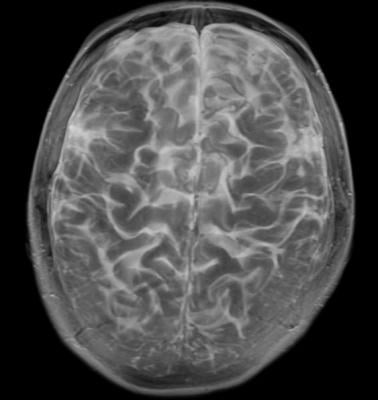
January 18, 2016 — People who have a behavioral disorder characterized by extreme outbursts of anger — such as road rage — have significantly lower gray matter volume in the brain region that plays an important role in regulating emotion, report scientists from the University of Chicago.
The study, published in the January issue of Biological Psychiatry: Cognitive Neuroscience and Neuroimaging, provides striking evidence of differences in the brains of impulsively aggressive individuals with intermittent explosive disorder (IED).
“Our data confirm that IED, is a brain disorder and not a disorder of ‘personality,’” said senior study author Emil Coccaro, MD, Ellen.C. Manning Professor and Chair of Psychiatry and Behavioral Neuroscience at the University of Chicago. “The behaviors displayed by IED patients represent the expected consequence of altered brain structure and function underlying impulsive aggression in humans.”
IED is defined by the DSM-5 as recurrent, impulsive, problematic outbursts of aggression, disproportionate to the situation—extreme road rage, for example. It is thought to be more common than bipolar disorder and schizophrenia combined.
To study brain changes involved in IED, Coccaro and his colleagues performed high-resolution magnetic resonance imaging (MRI) scans in 168 people, including 57 who were diagnosed with IED, 53 healthy control subjects and another 58 control patients with psychiatric diagnoses.
The team discovered a direct correlation between history of impulsive aggressive behavior and gray matter volume in the frontolimbic region of the brain—an area known to play a central role in the regulation of emotions. Across all subjects, reduced gray matter volume directly correlated with increases in aggressive behavior. The inverse relationship was also observed.
“There is clear evidence of brain alterations in impulsively aggressive individuals, which are not due to other factors,” Coccaro said. “IED is not simply ‘bad behavior’ that requires an attitude adjustment.”
The causes of the differences in gray matter volume are unknown, but IED runs in families and is thought to have a significant genetic component. Developmental processes and environmental influences may also play a role, and further studies are needed to investigate.
“More work needs to be done before we can use these brain scans to make diagnoses,” Coccaro said. “However, this work does inform us on what brain targets might be available for the development of novel treatments of impulsive aggression and IED.”
The study, “Frontolimbic Morphometric Abnormalities in Intermittent Explosive Disorder and Aggression,” was supported by the National Institute of Mental Health. Additional authors include Daniel A. Fitzgerald, Royce Lee, Michael McCloskey and K. Luan Phan.


 April 17, 2024
April 17, 2024 








